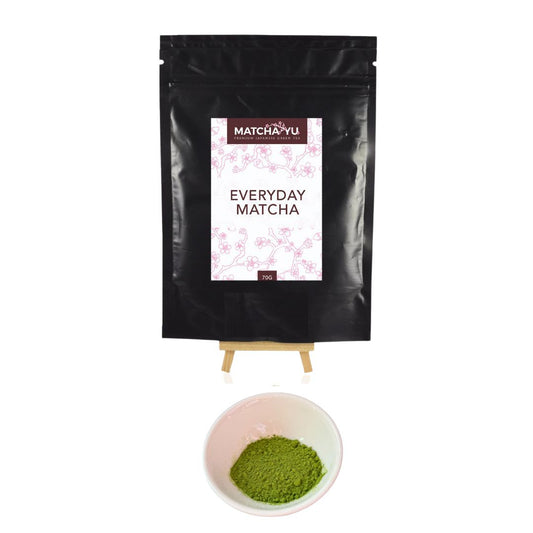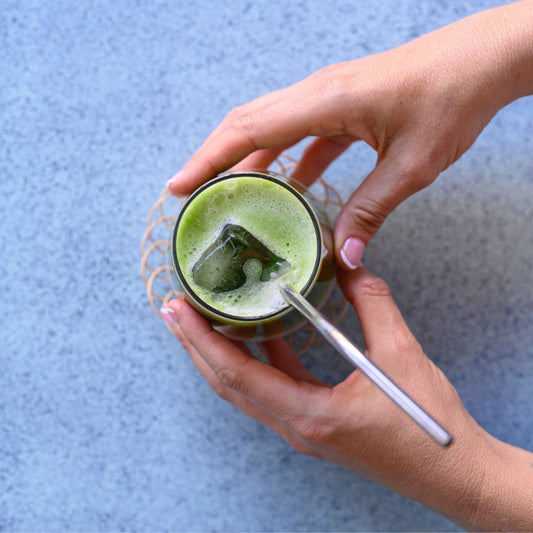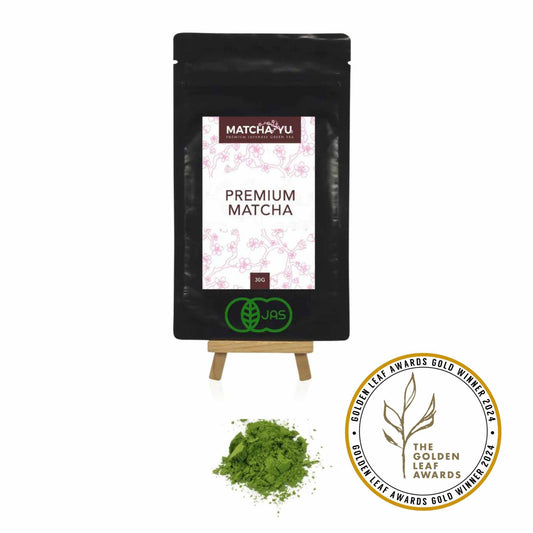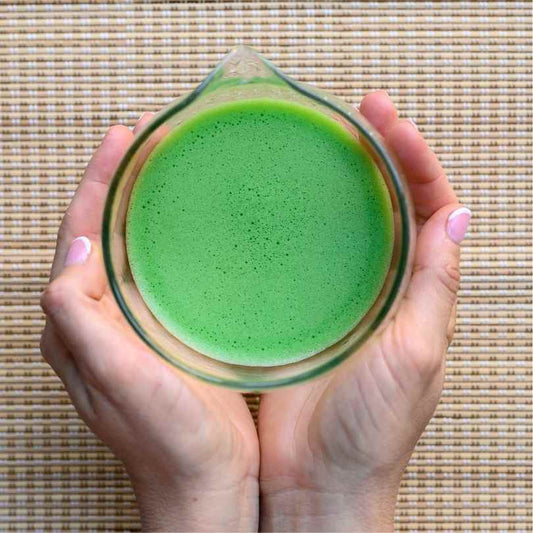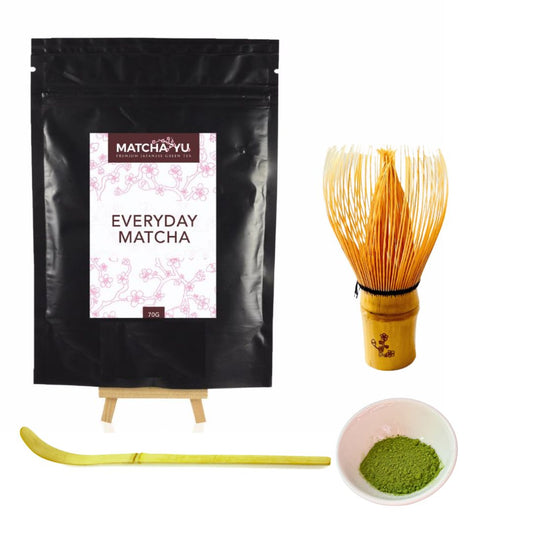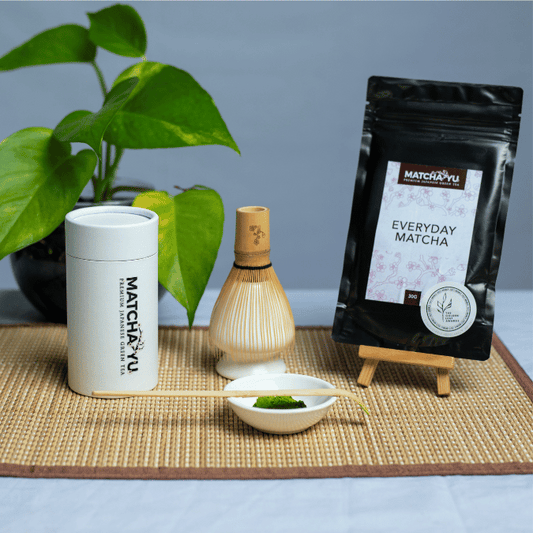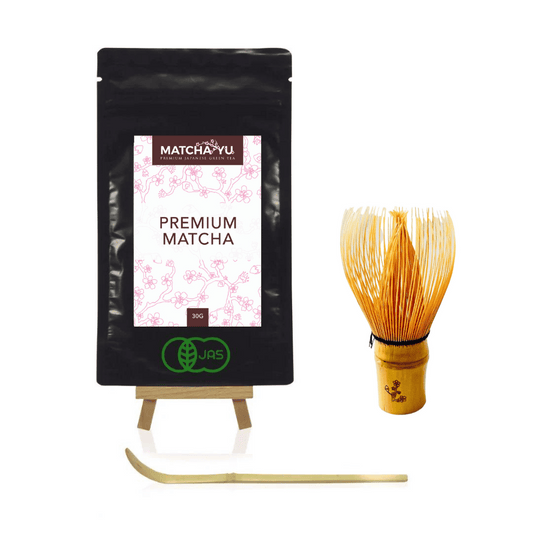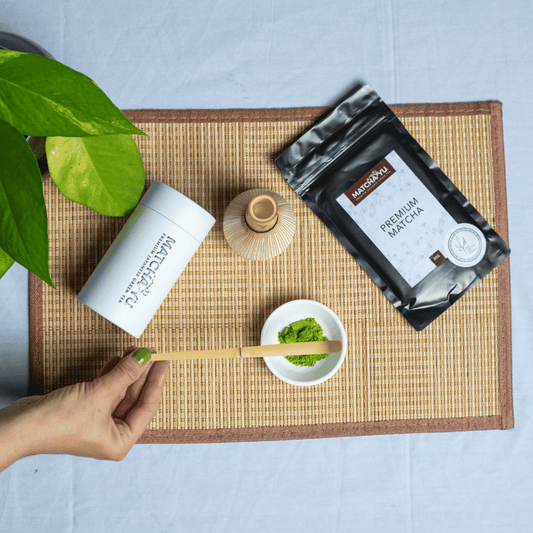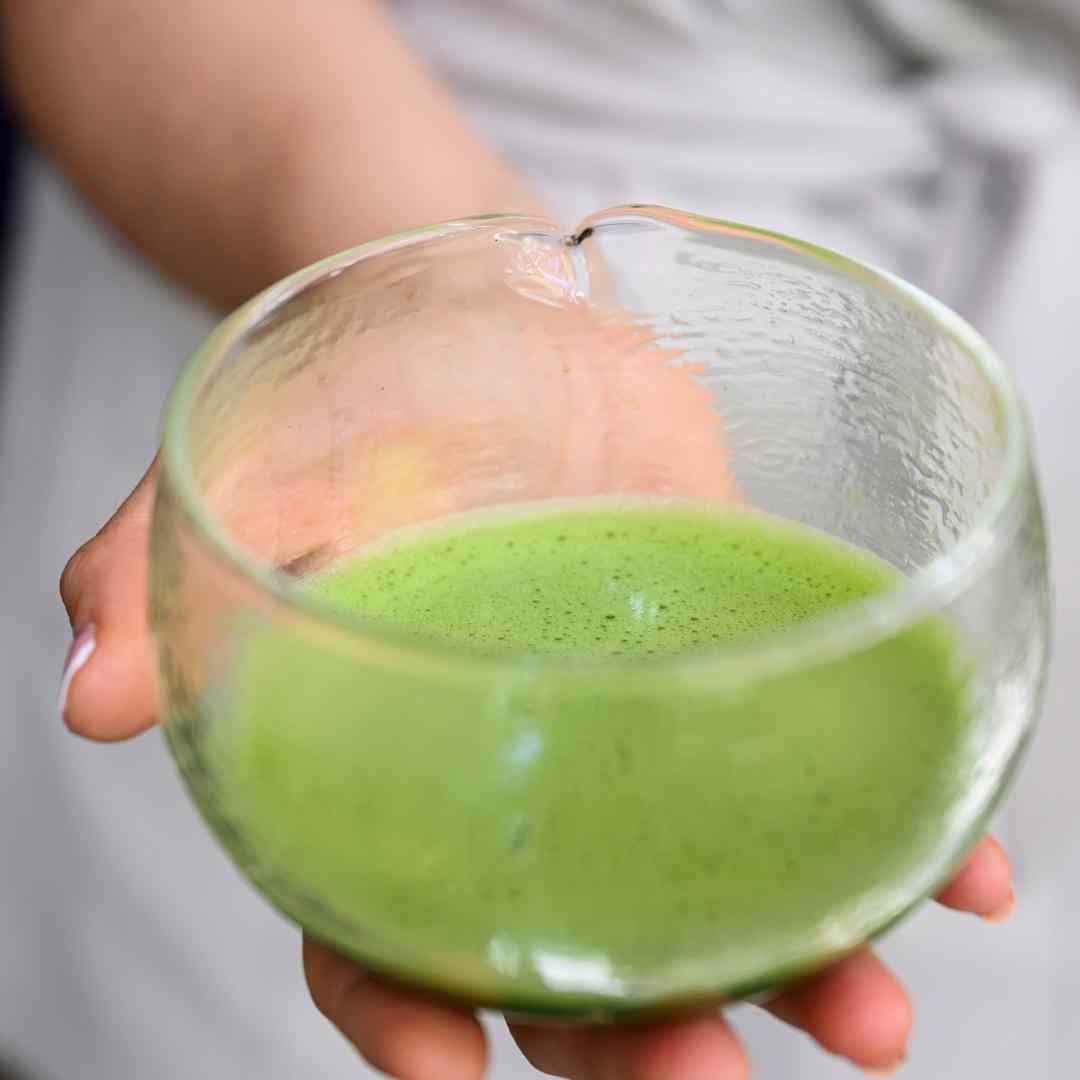
Behind Our Matcha Price Increases: What’s Happening in Japan’s Tea Industry
You may have noticed of late that the prices of Matcha across many different brands have significantly increased — and this includes Matcha Yu Tea. We want to be fully transparent with you about why.
From the 2025 tea harvest, our cost of purchasing our first harvest Matcha from Japan has increased by up to 60%. As such, we’ve had to adjust our retail prices in order to keep our business viable and continue providing you with Matcha without ever compromising on quality.
These changes weren’t made lightly, but they reflect a much bigger story happening across Japan’s tea-growing regions.
 (Erin of Matcha Yu Tea looking over the tea fields of Yame, Kyushu)
(Erin of Matcha Yu Tea looking over the tea fields of Yame, Kyushu)
What’s going on?
Matcha is made using tencha — the raw, shade-grown leaf that is ground down to make Matcha powder. This year, the cost of tencha has significantly increased across Japan, including in the Kyushu regions we source from: Yame (for our Everyday Matcha) and Kagoshima (for our Premium Matcha).
Here's the lowdown:
- Climate challenges: In Yame, a late frost earlier this year damaged parts of the spring tea crop, leading to lower yields. While the remaining harvest was beautifully vibrant green and rich in flavour, there simply wasn’t as much of it. In particular the Saemidori Cultivar (in our new 2025 Everyday Matcha blend) suffered at beginning of the season due to late frost.
- Rising demand for quality: Globally, Matcha is in high demand — and unlike the past, now even more people are seeking high-grade, first-harvest Matcha like ours to drink straight or in Matcha Latte. The expectation of what high quailty Matcha should taste like has leveled up a significant notch and that means more competition for limited tencha supply, pushing prices up.
- Increased production costs in Japan: From fertilisers to labour, the cost of growing and processing tea has gone up — and this directly impacts the small, family-run farms we proudly work with.
- Ageing tea farmers: The average age of tea farmers is now over 67 years old. Many are nearing retirement with no family member to take over as children favour the cities with more job opportunities and less physically demanding work. Less tea is being produced due to fewer farmers and remaining farmers carry a burden of keeping traditional methods alive.
All of these factors combined are playing part in the increasing prices of the 2025 Tencha Harvest, including the rural regions we source from on Kyushu Island.

(Tencha Tea Fields of Yame, Kyushu)
When you purchase our Matcha, you’re not just buying a speciality product — you’re also helping preserve a historic craft, support families who have dedicated their lives to tea, and keep rural tea-growing communities alive.
This is one of the many reasons we’re committed to paying fair prices and building long-term relationships with our growers. We visited Yame region in May this year as a show of our commitment to the relationship we have with our supplier (now over 5 years strong!) and to ensure the supply remains consistent for this year and beyond.
An important note on Everyday Matcha: the switch from Organic to Conventional Matcha.
To help keep our Everyday Matcha at a price point accessible to our loyal customers, we've made the decision to switch from organic to non-organic Matcha for this product.
Why? Because organic matcha prices have risen even more steeply than conventional due to:
- Stricter certification and compliance costs
- Higher risk of crop loss without chemical pesticides
- Lower yields per plant compared to conventional farms
We’ve chosen a high-grade, non-organic Matcha from Yame that still meets our quality standards — smooth, vibrant green, and delicious — but at a more feasible price point. This shift allows us to keep Everyday Matcha within reach for our community.
We are excited for you to try this 2025 Everyday Matcha, a delicious blend of Yabukita, Saemidori and Saeakari Cultivars and we can confidentially say its superior tasting than last year!

(First Harvest 2025 Yame Matcha - Yabukita, Saemidori and Saeakari Cultivars)
Prefer Organic Matcha Only? Our Premium Matcha will remain Certified Organic and is sourced from Kagoshima, just as it was in 2024. From the same cultivar (Okumidori), and from the same farm (single origin).
Our promise to you
We’ve always sourced our Matcha from trusted Japanese growers who use traditional, sustainable methods to cultivate their tea — and we won’t compromise on that.
Rather than switch to cheaper suppliers or lower-quality tea, we’re choosing to stand by our producers — and continue delivering Matcha that reflects the care and craftsmanship behind every cup.
We know price changes aren’t always easy, especially during challenging times. But we hope this gives you a little insight into why we’ve made this decision — and the values that guide every step of what we do.
As always, thank you for supporting small-batch, first-harvest Japanese Matcha. We’re incredibly grateful to have you as part of the Matcha Yu Tea community.
Most importantly, you allow us to support the tea businesses and farms we source from in Japan — and ensure the future of high-quality Matcha for years to come.
Thank you always for your support. Arigatou!
Erin
Founder, Matcha Yu Tea 🍵


